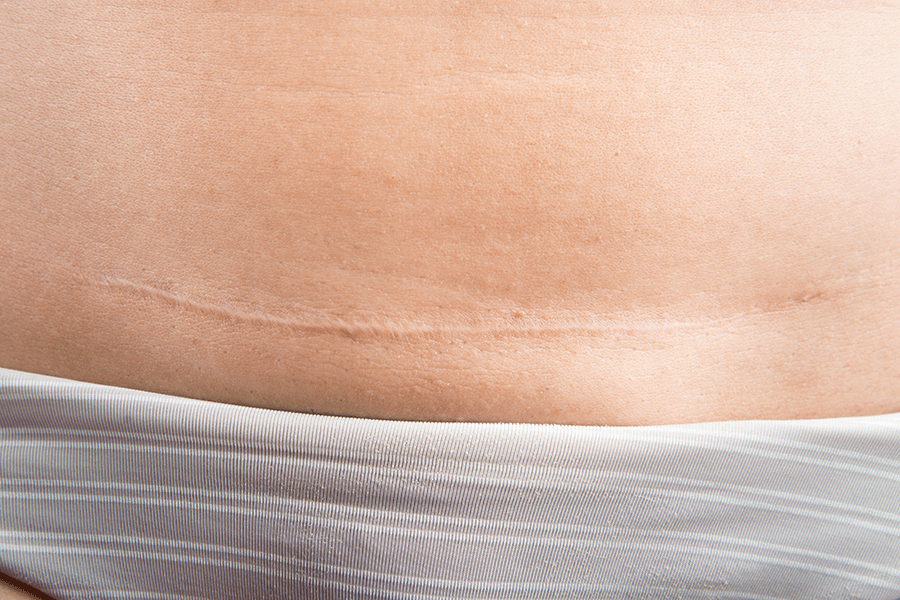Advice and guidelines can differ depending on what type of Caesarean birth you have and where you have given birth. However, no special wound care is really needed other than regular hygiene and wound care.
For the first 24 hours, your incision will be covered with a sterile bandage to reduce the chance of infection. Occasionally, incisions are secured with small strips of surgical tape, which fall off on their own, or staples, which are removed within the first week after surgery. Most moms leave the hospital with steri strips or small strips of surgical tape. These tapes usually become loose and fall off within two weeks. You can remove steri strips by 14 days after surgery. Complete recovery takes about five to six weeks.
Regular hygiene is enough after you have removed the bandage
Let the water run down over the wound and avoid scrubbing off tape residue the first few weeks before the wound has completely healed. Keep the scar clean at all times.You may find it more comfortable to wear cotton high-waisted pants and loose clothes for the first few weeks.
The healing of the wound begins immediately
A bikini cut is usually used when having a Caesarean birth. This means that the scar will be horizontal between the navel and the symphysis bone. Healing of the wound begins immediately and is usually completely healed after about 6 weeks. However, you may experience pain and discomfort from the scar for longer than 6 weeks. It can take up to a year before you have a full sensation in areas around the scar. It is also difficult to know what the scar will look like before a year has passed.
When the wound and scar heal, it can change colors, it can also be more or less swollen, but this is part of the whole healing process. During the first period, you should be aware of the risk of infections.
Different signs of infection in the wound or uterus can be:
- Increased pain
- The bleeding increases or smells bad
- You have a high temperature - Temperature of 100.5 or greater
- You feel generally unwell - for example, an upset stomach
- Your wound becomes red (or darker in Black or Brown skin), swollen, painful or has a discharge.
If you experience any of these signs, you should contact your healthcare provider immediately for further advice.
New skin needs support
When the scar heals, new skin is created. The new skin needs support. The new skin is sensitive to exposure to the sun. It is therefore important to protect the scar with clothing, and sun protection should you be in the sun after the Caesarean birth. Use a wide surgical tape and tape along the scar so that the entire scar is covered. The idea is that the tape relieves the new skin that is formed.
You will have a scar but this will fade over time. Your wound will be on average 4 to 6 inches long. It will be red at first but will fade over time. On darker skin, it may fade to a brown or white line.
Sources:
- Atkinson J-A., McKenna K., Barnett A., McGrath D. & Rudd M. A randomized, controlled trial to determine the efficacy of paper tape in preventing hypertrophic scar formation in surgical incisions that traverse Langer's skin tension lines. (2005) Plastic Reconstructive Surgery
- Rosengren H., Askew D., Heal C., Buettner P., Humphreys W. & Semmens L. Does taping torso scars following dermatologic surgery improve scar appearance? (2013) Dermatology Practical & Conceptual. PMID: 23785651 doi: 10.5826/dpc.0302a13
